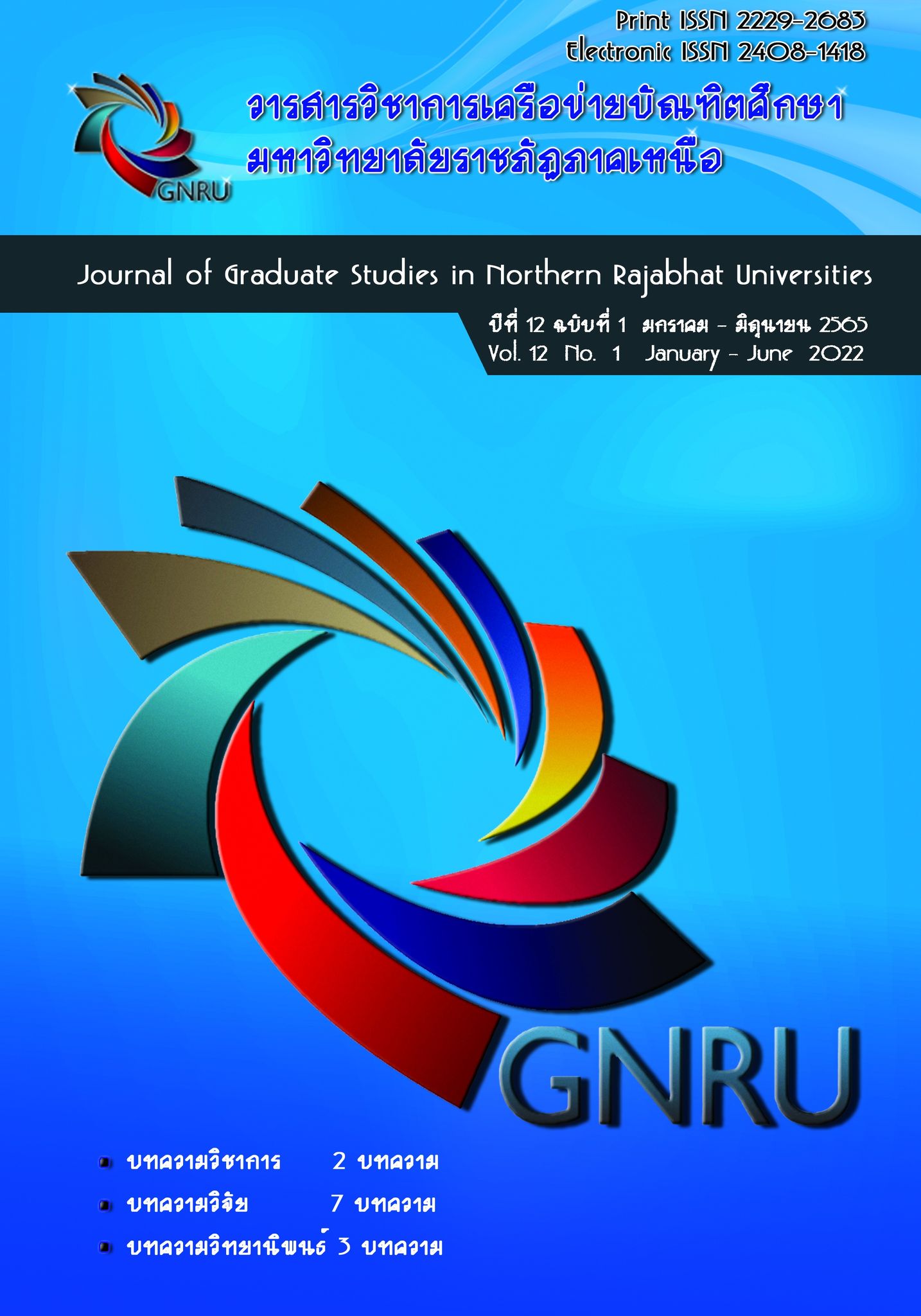การทดสอบความสัมพันธ์เชิงดุลยภาพในระยะยาวและความเป็นเหตุเป็นผลระหว่างการมีส่วนร่วมในกำลังแรงงานของสตรีกับภาวะเจริญพันธุ์รวมและความพร้อมในการดูแลบุตร The Long Term Equilibriums and the Causality among the Female Labor Participation Rate Fertility and Childcare Availability
Main Article Content
Abstract
การศึกษามีวัตถุประสงค์ที่ใช้ในการศึกษาสองประการได้แก่ (1) เพื่อศึกษาความสัมพันธ์เชิงดุลยภาพในระยะยาว และ (2) เพื่อศึกษาความเป็นเหตุเป็นผลกันระหว่างการมีส่วนร่วมในกำลังแรงงานของสตรี ภาวะเจริญพันธุ์ และความพร้อมในการดูแลบุตร การวิจัยนี้เป็นการวิจัยเชิงปริมาณที่อาศัยข้อมูลทุติยภูมิในการดำเนินการวิจัยและทำการทดสอบความสัมพันธ์เชิงดุลยภาพในระยะยาว หรือ Co-integration Test ด้วยวิธี Engle and Granger และ การทดสอบความเป็นเหตุและผลจะใช้การทดสอบด้วยวิธี Granger Causality Test ผลการศึกษาพบว่า ตัวแปรที่ใช้ในการศึกษาจำนวน 10 ตัวแปรมีความหยุดนิ่งของข้อมูลที่ผลต่างอันดับที่หนึ่งทุกตัวแปรและมีจำนวนช่วงของข้อมูลล่าช้าที่เหมาะสมมีค่าเท่ากับ 1 ช่วงเวลา ผลการทดสอบความสัมพันธ์เชิงดุลยภาพในระยะยาว พบว่า การมีส่วนร่วมในกำลังแรงงานของสตรี กับ สัดส่วนจำนวนเด็กต่อสถานรับเลี้ยงเด็กมีความสัมพันธ์เชิงดุลยภาพในระยะยาว และพบอีกว่า ภาวะเจริญพันธุ์ของสตรี มีความสัมพันธ์เชิงดุลยภาพในระยะยาวกับสัดส่วนจำนวนเด็กต่อสถานรับเลี้ยงเด็กด้วยเช่นกัน ผลการทดสอบความเป็นเหตุเป็นผล พบว่า การมีส่วนร่วมในกำลังแรงงานของสตรี ภาวะเจริญพันธุ์ของสตรี เป็นตัวกำหนดการเปลี่ยนแปลงของสัดส่วนจำนวนเด็กต่อสถานรับเลี้ยงเด็ก ซึ่งเป็นความสัมพันธ์ในทิศทางเดียว ในขณะที่ภาวะเจริญพันธุ์ของสตรีกับสัดส่วนจำนวนเด็กต่อผู้ดูแลเด็ก เป็นทั้งเหตุและผลซึ่งกันและกันแสดงให้เห็นถึงความสัมพันธ์แบบสองทิศทางของตัวแปรทั้งสองระหว่างภาวะเจริญพันธุ์ของสตรีกับสัดส่วนจำนวนเด็กต่อผู้ดูแลเด็ก
This study had two objectives, the first one was to test the long term relationships among the female labor participation rate, fertility and childcare availability and the second one was to find out the mutual causality among the female labor participation rate, the fertility rate and childcare availability in case of Thailand. This study was applied the annually time series data related to the female labor participation rate, fertility rate and childcare availability to accomplished the two objectives. The Engle and Granger co-integration test and the Granger causality test were adopted to this study. Results showed that the 10 time series data used in this study had a stationary at the first difference and they had one lag length period which optimized for an annually data. The Engle and Granger co-integration test indicated that there were the long run relationships between the female labor participation rate and the fertility rate to the childcare availability The Granger causality test were found the unidirectional association between the female labor participation rate and the fertility rate to the childcare availability, which was defined in terms of childcare density ratio. Moreover there was the bidirectional association between the fertility rate and the childcare availability, which was defined in terms of childcare quality ratio.
Article Details
References
ภูมิฐาน รังคกูลนุวัฒน์. (2556). การวิเคราะห์อนุกรมเวลาสำหรับเศรษฐศาสตร์และธุรกิจ. สำนักพิมพ์แห่งจุฬาลงกรณ์มหาวิทยาลัย.
มนสิการ กาญจนะจิตรา, และนุชราภรณ์ เลี้ยงรื่นรมย์. (2557). การเกิดกับความมั่นคงในประชากรและสังคม.พิมพ์ครั้งที่ 1. นครปฐม : สถาบันวิจัยประชากรและสังคม มหาวิทยาลัยมหิดล, 2557.
มนสิการ กาญจนะจิตรา, กัญญาพัชร สุทธิเกษม, และ รีนา ต๊ะดี. (2559). เมื่องานรัดตัว จะสร้างครอบครัวได้อย่างไร: สมดุลชีวิตและงานของคนรุ่นใหม่. พิมพ์ครั้งที่ 1.-นครปฐม : สถาบันวิจัยประชากรและสังคม มหาวิทยาลัยมหิดล, 2559.
Asteriou, D., and Hall, S. G. (2007). Applied econometrics: A modern approach using EViews and Microfit. (Revised edition). Palgrave Macmillan: New York.
Baizan, P. (2009). Regional child care availability and fertility decisions in Spain. Demogr. Res. 21, 803–841.
Becker, G.(1960). An economic analysis of fertility. In: Demographic and Economic Change in Developed Countries. National Bureau of Economic Research, Princeton, pp. 209–231.
. (1985). Human capital, effort, and the sexual division of labor. Journal of labor economics, S33-S58.
De Tray N. Dennis. (1973). Child Quality and the Demand for Children. Journal of Political Economy Vol. 81, No. 2, Part 2: New Economic Approaches to Fertility (Mar. - Apr., 1973), pp. S70-S95.
Floge, L. (1989). Changing household structure, child-care availability, and employment among mothers of preschool children. J. Marriage Family 51 (1), 51–63.
Gujarati, D. N., and Porter, D. C. (2009). Basic econometrics. (Fifth edition). McGraw Hill: New York.
Ikeda, S. (2010). Company size and childcare leave: the problems of support for women’s job continuity. Jpn. Labor Rev. 7 (1), 119–139.
Nakamura, J., and Ueda, A. (1999). On the determinants of career interruption by childbirth among married women in Japan. J. Jpn. Int. Econ. 13, 73–89.
Pesaran, M., Shin, Y. and Smith, R. J. (2001). Bounds testing approaches to the analysis of level relationships. Journal of Applied Econometrics, Vol.16, pp.289-326.
Presser, H. B., and Baldwin, W. (1980). Child care as a constraint on employment: prevalence, correlates, and bearing on the work and fertility nexus. Am. J. Sociol. 85 (5), 1202–1213.
Richter, K., Podhisita, C., Chamratrithirong, A., and Soonthorndhada, K. (1994). The impact of child care on fertility in urban Thailand. Demography 31, 651–662.
Rindfuss, R.R., Guilkey, D.K., Morgan, S.P., and Kravdal, Ø. (2010). Child-care availability and fertility in Norway. Popul. Develop. Rev. 36 (4), 725–748.
Smith-Lovin, L., and Tickamyer, A. (1978). Nonrecursive models of labor force participation, fertility behavior, and sex role attitudes. Am. Sociol. Rev. 43, 541–557.
Stolzenberg, R.M., and Waite, L.J. (1984). Local labor markets, children and labor force participation of wives. Demography 21 (2), 157–170.
Willis, R. J. (1987). What have we learned from the economics of the family?. Am. Econ. Rev. 77 (2), 68–81


